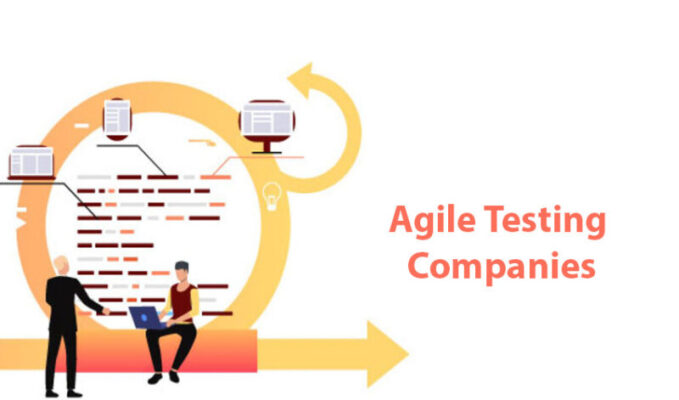In the modern world that is shifting to digital there can be no doubt in the significance of cybersecurity. As threats in the field of cyber space change the same do the strategies used to combat them. This leads us to the use of enhanced cyber security testing practices in order to work out whether systems and networks are adequately secure to deter and deflect invasions. In 2025, the business and organizations are going to bear far more complicated threats, and hence, it will be highly important to understand different types of cyber security testing.
This article will discuss the major categories of cybersecurity testing that are anticipated to be indispensable as the world enters 2025 and is going to describe detailed methodologies and practices that are going to be the cornerstone of online security of the future.
Outline
| Heading | Subheading |
|---|---|
| 1. Introduction to Cyber Security Testing | – The significance of cybersecurity testing in 2025 |
| 2. Importance of Cyber Security Testing | – Protecting data and ensuring compliance |
| 3. Penetration Testing | – Types of penetration testing |
| 4. Vulnerability Scanning | – Automated vs. manual vulnerability scanning |
| 5. Security Audits | – Internal vs. external security audits |
| 6. Red Teaming vs. Blue Teaming | – The role of adversarial simulations in cybersecurity |
| 7. Application Security Testing | – Testing for web, mobile, and cloud applications |
| 8. Network Security Testing | – Techniques for securing network infrastructure |
| 9. Social Engineering Testing | – Assessing human vulnerabilities |
| 10. Zero Trust Security Testing | – Ensuring compliance with zero trust architecture |
| 11. Security Posture Assessment | – Comprehensive evaluation of security readiness |
| 12. Compliance Testing | – Meeting regulatory and industry standards |
| 13. Risk-Based Security Testing | – Prioritizing risks and aligning testing strategies |
| 14. Automated vs. Manual Testing | – Benefits and limitations of automated tools |
| 15. The Future of Cyber Security Testing | – Emerging trends and technologies shaping cyber security in 2025 |
1. Introduction to Cyber Security Testing
Cybersecurity testing refers to the processes that are followed in a bid to determine the strengths and weaknesses that any given organization has in its digital environment. It will be important for security personnel to continue to evolve their strategies as opposed to opponents proactively creating and using innovative strategies to access, lesion and even destroy information, ideas, and structures in both the private and public realms.
Looking forward to the year 2025, the cyber world will be in for a lot of trouble and headache such as state-sponsored attack, AI malicious software and the quantum computing challenge. It will hence be more important than ever to routinely check security shields and verify that they remain fully effective.
2. Importance of Cyber Security Testing
Thus, it is crucial to notice the significance of cybersecurity testing. It assists an organization establish weak points that may be used by the attackers prior to the occurrence of an attack. Also, testing helps and checks compliance with required rules and standards, for example, GDPR or HIPAA that require compliance with strict security measures.
Testing also provides an insight of an organization’s security status and therefore allow decision makers to put in place measures such as upgrading, to avoid situations such as data leakage or system crashes. It is thus believed that in the year 2025 the process of continuous security testing will be in practice because the processes of digital transformations are gaining strength and are being actively implemented in various industries.
3. Penetration Testing
Penetration testing, also referred to as pen testing, is perhaps one of the most sought-after cybersecurity testing. It is the process of conducting a controlled exposure of an organization’s networks, systems, or applications to a limited set of Cybersecurity Threat Agents. Penetration tests can be divided into several categories:
Black Box Testing
Black box testing is one where the tester has no knowledge of the system under test structure or design. It replicates an actual attack by a malicious external agent and the purpose of this is to demonstrate just how quickly an attacker can penetrate the organizational infrastructure.
White Box Testing
On the other hand, the white box testing grants the tester ample permission to have a glimpse of the internal structure of the system. It also provides a top to down analysis on the security of the system in its broadest sense.
Gray Box Testing
Like in black and white box testing the gray box testing also provides limited information about the system to the tester. This second type of testing is liked for the identification of external as well as internal threats.
4. Vulnerability Scanning
Vulnerability scanning is one of the procedure that are carried out in an automated form with the aim of identifying known vulnerabilities in a system. While penetration testing involves some level of interaction with the target system, vulnerability scanning on the other hand, is conducted with some tools, which try to match the system configuration against the list of known vulnerabilities. It is aimed at revealing such problems as outdated software and settings, insecure configurations and other usual vulnerabilities which can be used by intruders.
Automated Scanning Tools
The odds of automated scanning are improving simultaneously with the development of successional recognition instruments. Some can accomplish a network scan within a short time and then report areas of weakness within the network. As far as those continuous monitoring tools are concerned, these tools come especially handy for organizations.
Manual Vulnerability Assessments
Although there are machines and software that can scan through the thousands of line of codes and applications, there are cases that even these tools may not be able to identify the more concealed risks. However, there are instances where human-centered evaluation from security personnel can give a deeper insight into the system adding to the intricacies of the system and the paths through which an attack may happen that the machines have not captured.
5. Security Audits
Security audit is a structured process of reviewing an organisation’s security policies and standards. The audits can be conducted both by the company’s personnel with specialization in security and by third parties – the auditors.
Internal Security Audits
If internal the audit is oriented towards the observation of compliance of organizational standards by the staff and awareness of security measures by the staff. Those can also be used to assess some inconsistency in internal security measures and policy.
External Security Audits
They might be more structured and executed to fulfil external requirements such as that of a government or shareholders. These audits offer an independent check on the organisation’s security status and are useful in compliance with standards.
6. Red Teaming vs. Blue Teaming
Red teaming and blue teaking are two types of adversarial simulations, in which one side attempts to test the security vulnerabilities if the organization.
Red Teaming
Red teams are people who are involved in an ethical hack and perform as an enemy to assess the strength of a system. Ever, the primary purpose of red team is to act as a disruptive force against the organization and its defenses by simulating real life scenarios.
Blue Teaming
Blue teams on the other hand are tasked with the responsibility of protecting the organizations systems and networks. They are involved in security surveillance, are involved in the handling of security incidences, and are pro-active when it comes to acts of breach. The red and blue teams are involved in the detection of weaknesses of a system and mapping out measures that may be relevant for enhancing the security of the system in question.
7. Application Security Testing
Today with the development of various application like cloud computing, mobile applications, and various web-based services, application security testing has become an important component of a security solution.
Web Application Testing
Web application testing incorporates the testing of websites or web software for some likely flaws or weaknesses in the web systems. Other OWASP top 10 risks are; Injection, especially SQL injection, Cross-site scripting and broken authentication and session management. Having reviewed what business trends might look like in 2025 it is clear that as a lot of companies will move their services online the question of web application security will be paramount.
Mobile Application Testing
Mobile applications are usually rich in sensitive information that the attackers are always eyeing on. Some of the areas that must be tested include, but not limited to, data storage and encryption since a mobile app might contain user’s sensitive information that may attract hackers attacks.
Cloud Application Testing
This is because as people carry out a trend toward cloud adoption, cloud application security testing will be of great help in defending data stored in cloud environments. Cloud security testing therefore refers to the process through which one tests the cloud infrastructure and cloud applications in the cloud environment for vulnerabilities.
8. Network Security Testing
Network security testing mainly aims at determining the vulnerability of organization’s network . This is mainly the testing or evaluation of firewalls, routers, switches, and other relative networking instruments.
Firewalls and Intrusion Detection Systems
Fires and IDS/IPS should be tested to guarantee that any access not approved is denied, as well as to assess whether any antisocial activity is monitored in real time.
Network Segmentation
Network segmentation testing determines the procedures that are designed to prevent one segment of the network from obtaining access to the other segment. This makes it difficult for the attackers to transverse the network once they have gained the first foot in the door.
9. Social Engineering Testing
Social engineering testing is a process that investigates the extent to which an organization is at risk of attacks exploitative of human errors.
Phishing Simulations
Phishing is perhaps the most widely spread type of social engineering. Security quizzes and particularly phishing mimics demonstrate how susceptive the employees are to bogus mailings.
Physical Security Tests
Physical security tests entail posing as an unauthorised person attempting to access the company compound, for instance, by ‘tailgating’. They can point out weakness in physical security and informacy or lack of concern of the employees at a certain area.
10. Zero Trust Security Testing
Zero Trust implementation means that no user or device is considered trustworthy either inside or outside the perimeter of a network. Conformance checks of Zero Trust principles entails confirming that access controls, MFA and the networks monitoring solutions are operational.
Access Control Testing
Access control systems must be tested to constantly check that there is no pass through on crucial data, systems and information to individuals or groups who ought not to have such information or be granted access to such systems. This also covers the extent to which the access is easily granted, denied, or amended to the various users in a system.
Network Segmentation and Microsegmentation
In addition, Zero Trust also puts much importance on the aspect of network segmentation. Testing should assure that there are microsegmentation containing plans to reduce extent of harm in the event of such a breach.
11. Security Posture Assessment
Security posture assessment can therefore be described as the process of ordinarily rating an organization’s security preparedness. This kind of testing normally uses penetration testing, vulnerability scanning and security audit to arrive at a consolidated view of the strengths and weaknesses of an organization’s security structure.
12. Compliance Testing
Compliance testing checks that an organisation is fulfilling the security requirements of the common regulatory and compliance frameworks like the GDPR, HIPAA, and the PCI-DSS.
13. Risk-Based Security Testing
Risk-based security testing involves focusing on those specific risks that have been identified in the organization.
14. Automated vs. Manual Testing
The use of automated and manual security testing will have to act in harmony in 2025 for organizations.
15. The Future of Cyber Security Testing
As cyber threats continue to grow more complex and diverse, AI, machine learning, and quantum computing will have a more significant part of the act of cybersecurity testing.
FAQs:
1. What is the difference between penetration testing and vulnerability scanning?
While penetration testing is more of an attempt to ‘act out’ a real life cyber attack for the purpose of finding and learning of the areas that can be exploited; vulnerability scanning on the other hand is an automated version of known weaknesses in a system without having to actually attempt the actual hacking. Where penetration testing is broader and more elaborate, vulnerability scanning is faster and more steady.
2. How often should cybersecurity testing be performed?
Security testing should be an ongoing process, which means that vulnerability assessments should be carried out frequently with a lesser frequency for complete security tests such as Penetration Testing. While vulnerability scans can practiced on a weekly or monthly bases, full security audits and assessments should be made at least annually or at any time changes have been made to the system.
3. What are the main benefits of red teaming in cybersecurity?
Red teaming benefits organizations due to the fact that it provides real life attack scenario in the view of a hacker. This helps the businesses to uncover areas that in-house teams might not be able to see, review the responses for threats and to fortify barriers.
4. Why is social engineering testing important?
Social engineering testing checks the weak links in an organization’s employee related defenses through for example phishing or experimented breaking in. Being that people are usually the biggest vulnerability when it comes to cyber risks, testability then assists in preparing staff to identify these risks and act onto them.
5. How does zero trust security testing differ from traditional security testing?
Zero trust security testing presumes that no user, device or network should be trusted irrespective of the fact that they belong to the organization. This kind of testing involves ensuring that they are well containing unauthorized access, passwords, biometric, firewall and other measures against internal and external threats as compared to other models that assume internal users are trusted.
6. What are the latest trends in cyber security testing for 2025?
Some of the trends in cybersecurity testing in the year 2025 are, the integration of artificial intelligence and machine learning for identification of new advanced threats, implementation of more of automated testing tools for consistent monitoring, and also the effort of shifting towards zero trust models. Other trends are related to enhanced using of cloud security testing, as well as preparation to quantum computing threats.
Read Dive is a leading technology blog focusing on different domains like Blockchain, AI, Chatbot, Fintech, Health Tech, Software Development and Testing. For guest blogging, please feel free to contact at readdive@gmail.com.





